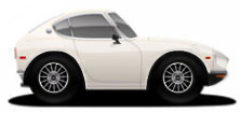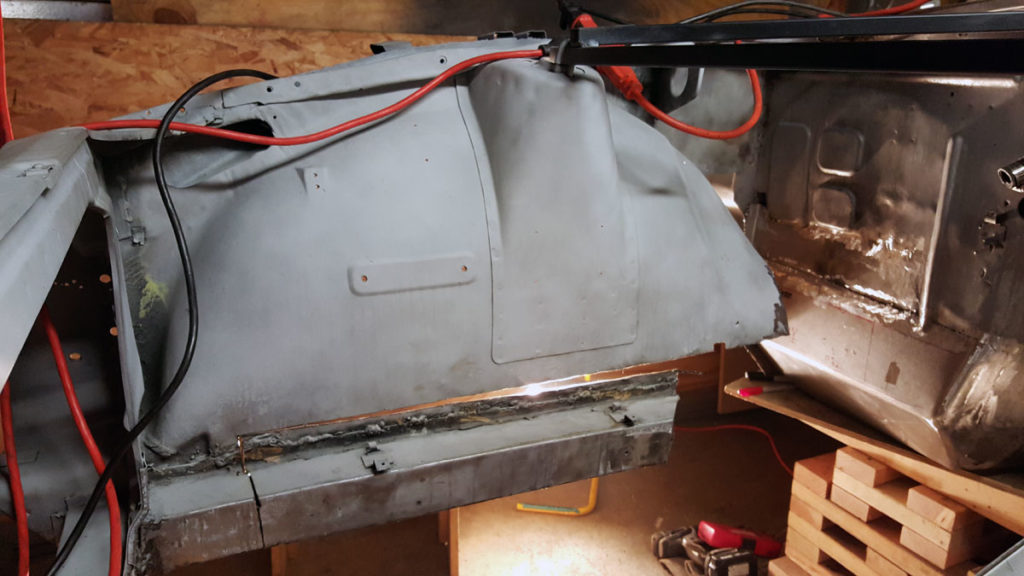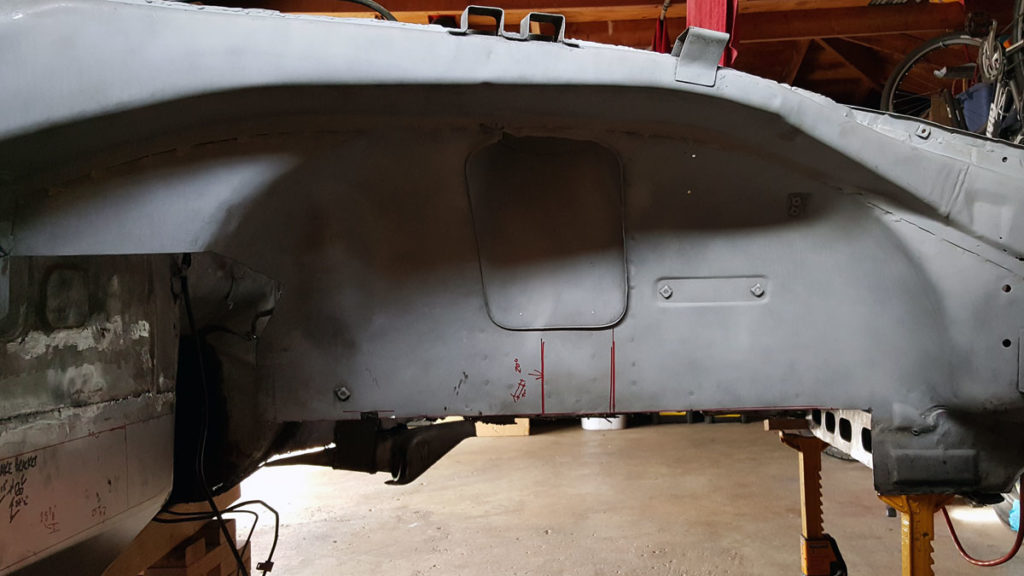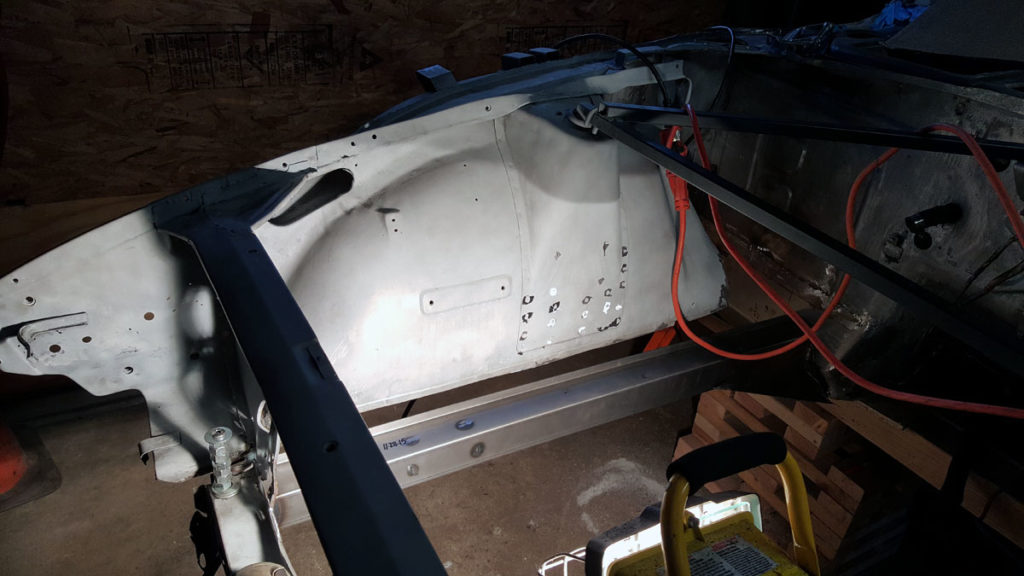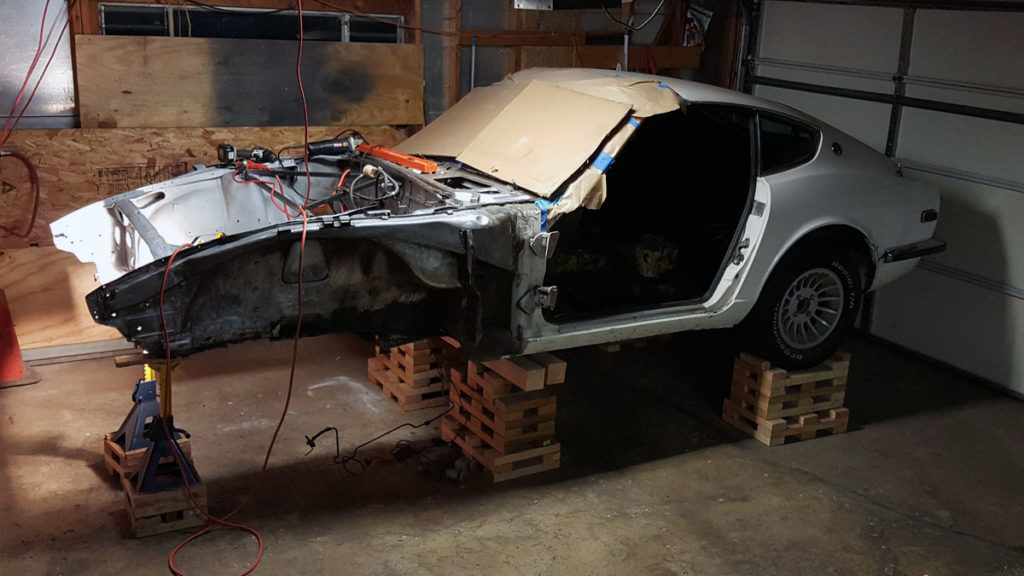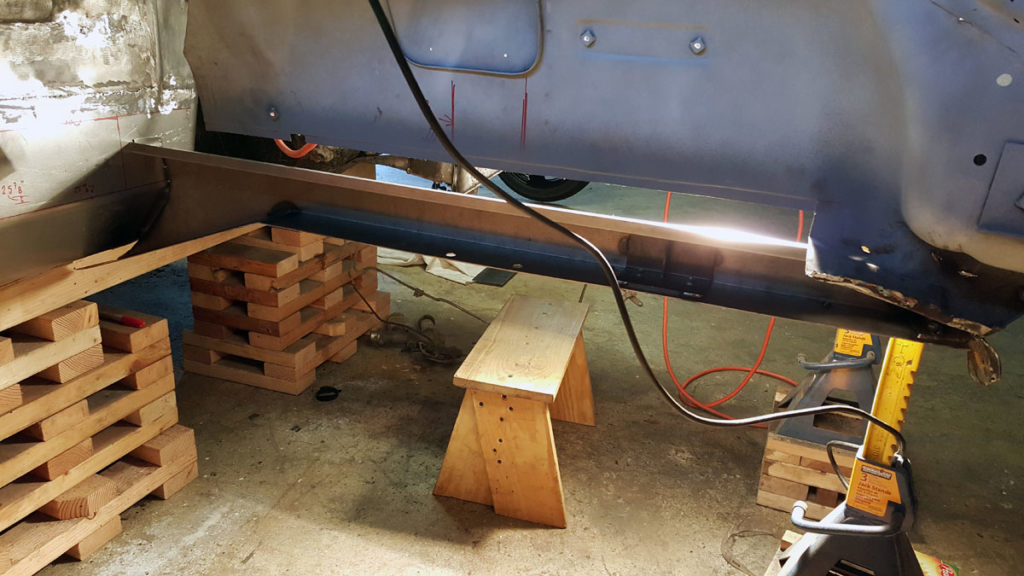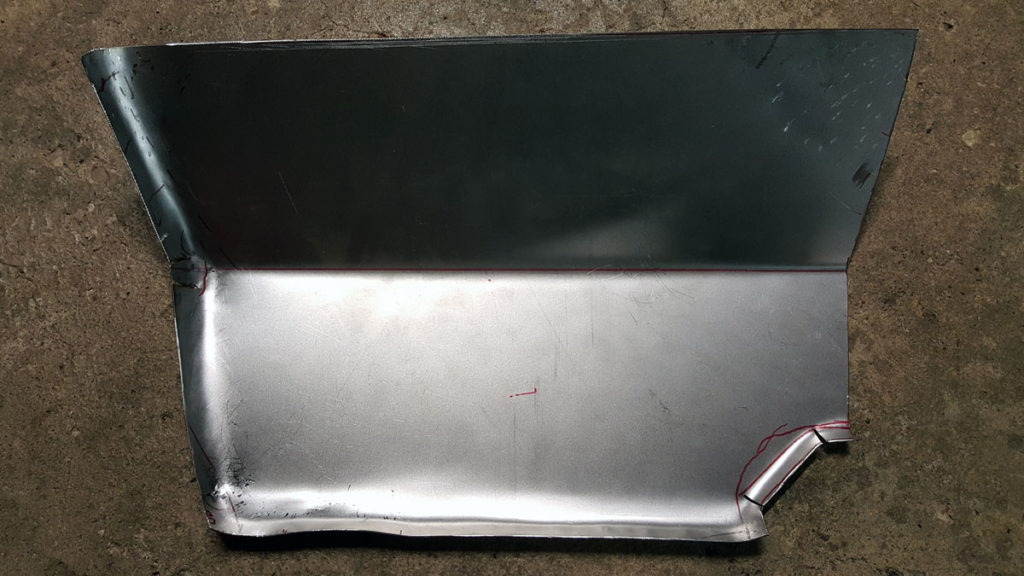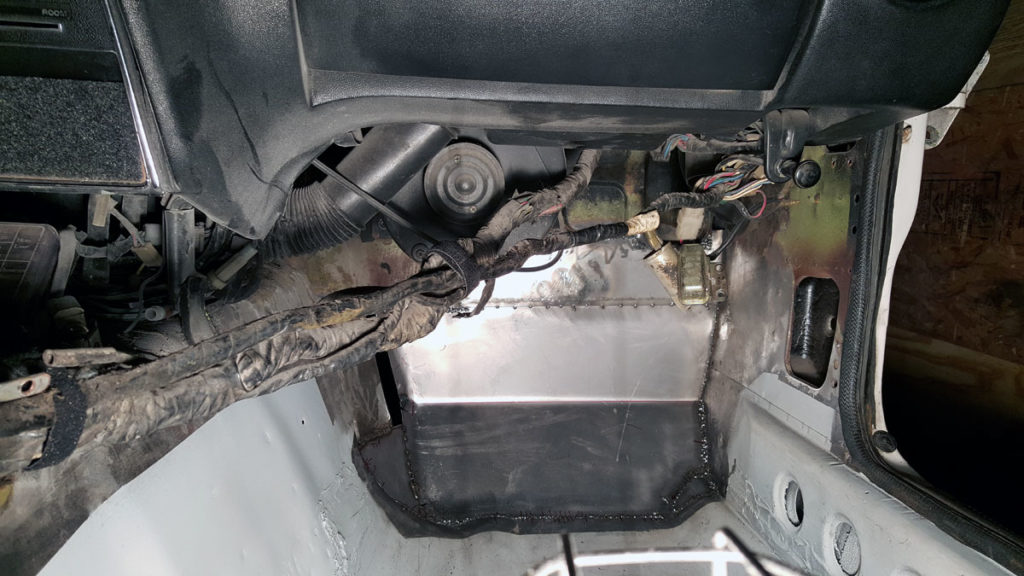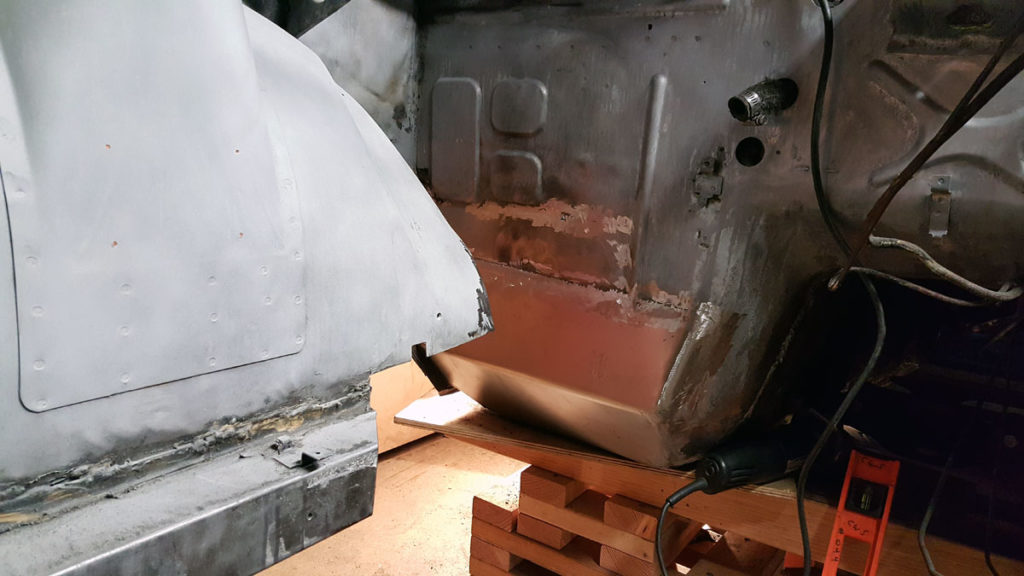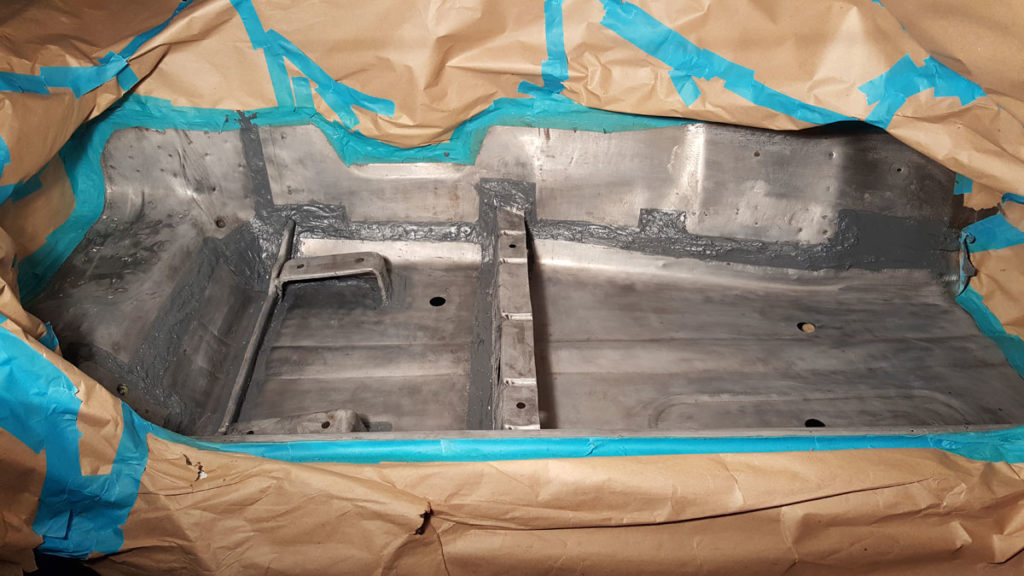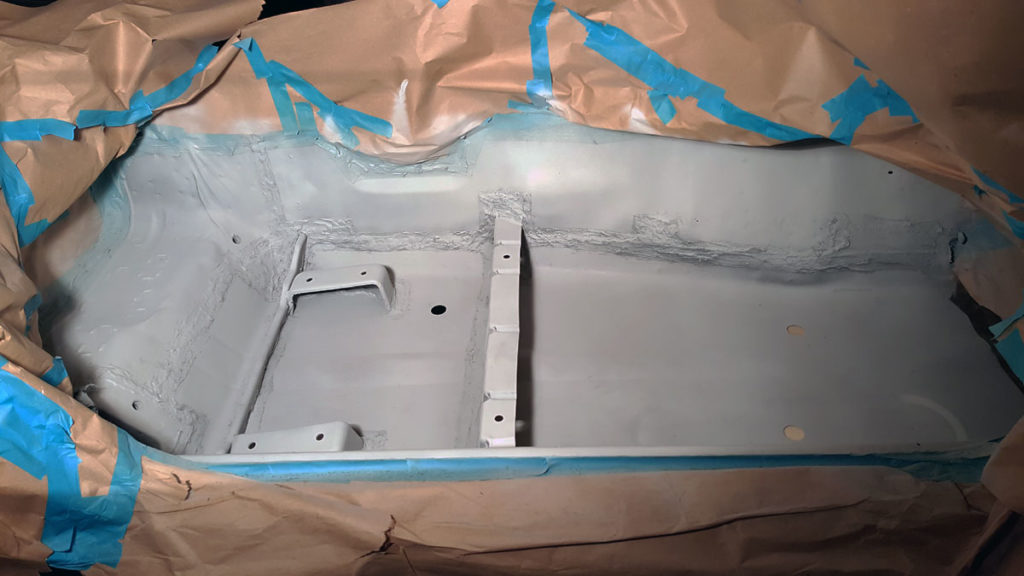With the passengers side foot well pretty much squared away, I started to cut out the rest of the passengers side frame rail. To keep things relatively square, I created a triangle shaped frame and bolted it to the hood catch and shock towers which you can kind of see in this photo.
Below is a view from the outside of the wheel well. Which took weeks by the way, to scrape off the tar undercoating and wire wheel down to bare metal before spraying them with primer.
And if you look closely, you can make out where the wheel well had been welded, or brazed rather, to the inner fender wing. Meaning that some part of this had been replaced, probably due to an accident in the front right of the car.
When I ordered new floor pans, I also ordered a set of frame rails. They too required a bit of adjustment to get to fit, but seemed to need much less.
Between the power tools, steel tube reinforcement and trying to make sure I had enough light in the engine bay, I found myself in tight quarters, surrounded by a web of electrical cords and steel.
I had to remove a lot of steel when I removed the old frame rail. So much so, that I had to pretty much make the entire bottom from scratch.
But before I could do that, I needed to replace the suspension pockets because mine were shot. After a few failed attempts at forming one, I settled on fabricating them out of several pieces of 14 gauge, welded together.
Dimensions below and a link to the model if you want to make your own.
These pockets are commonly rusted out on S30’s and to my knowledge, they’re not available to buy, which is surprising to me. But I feel that mine came out alright.
Next it was time to figure out what I was going to do about the massive hole where the battery tray used to be.
To find a particular page, use the search feature or index.
